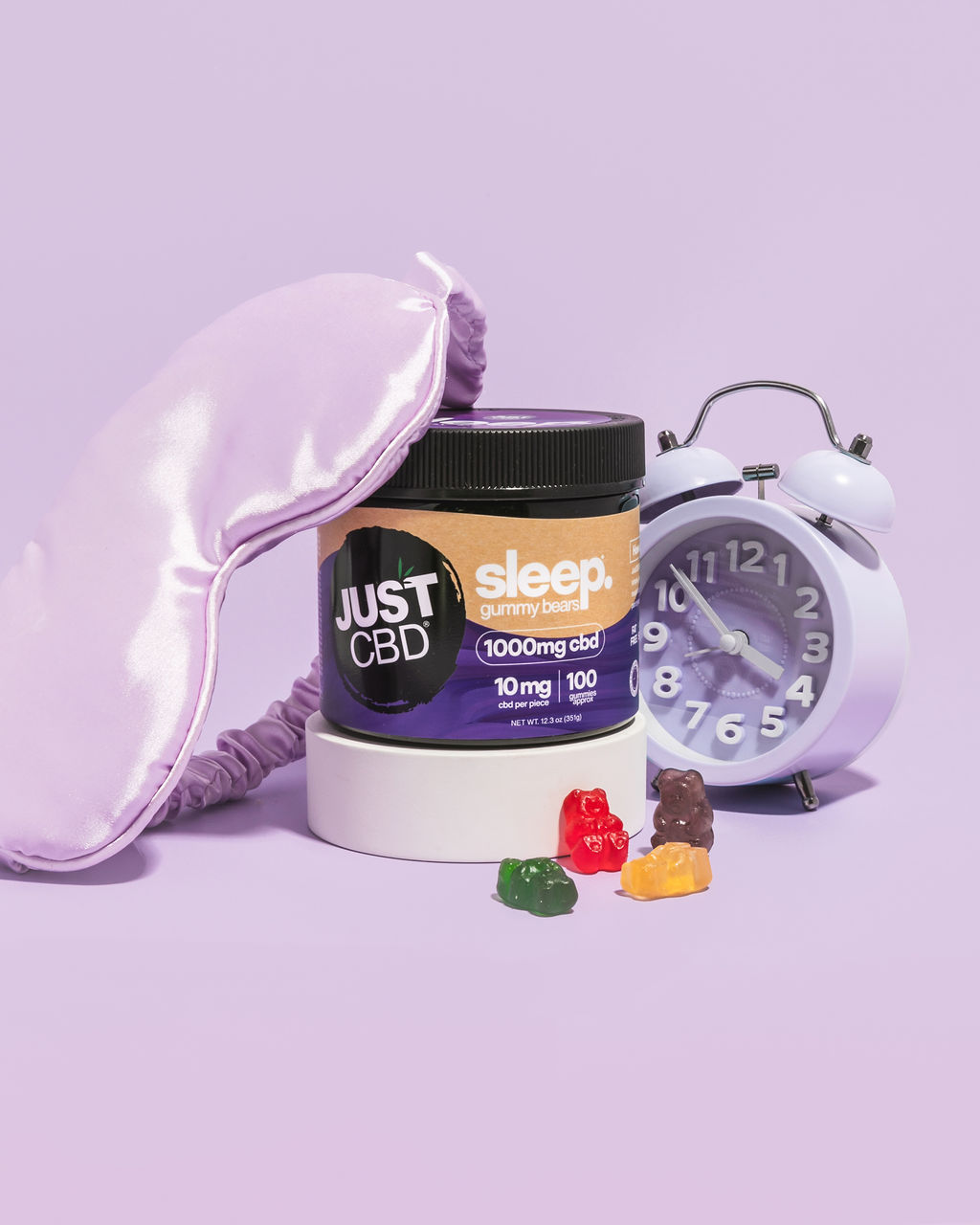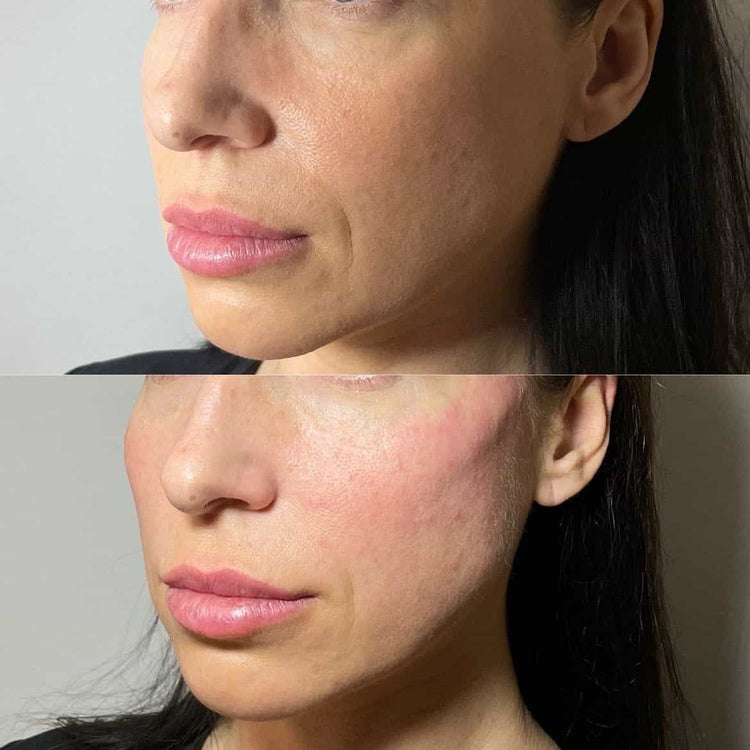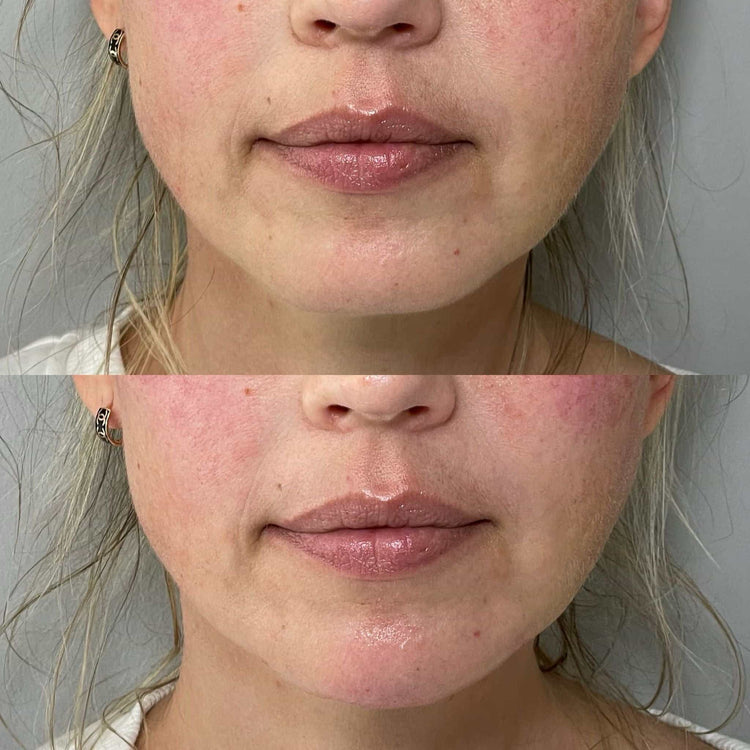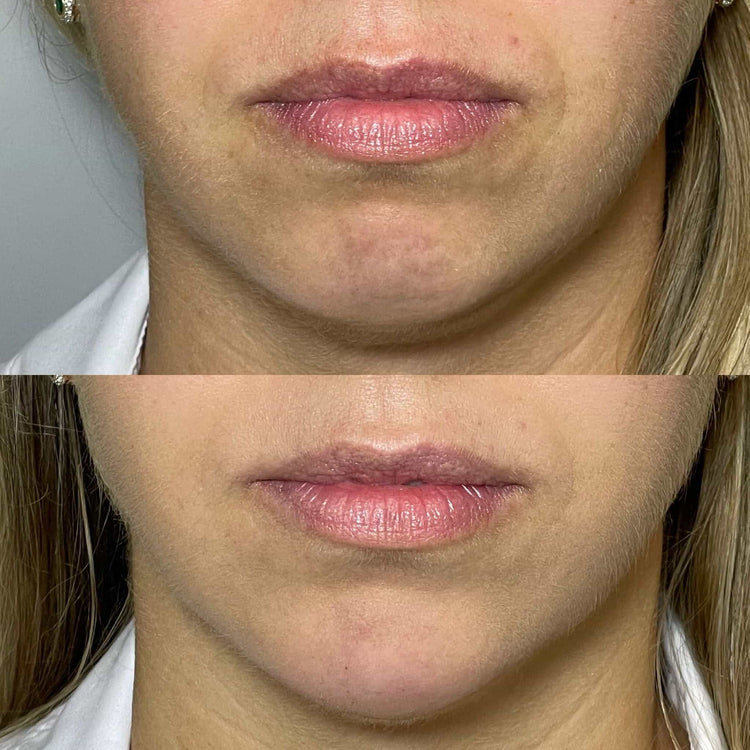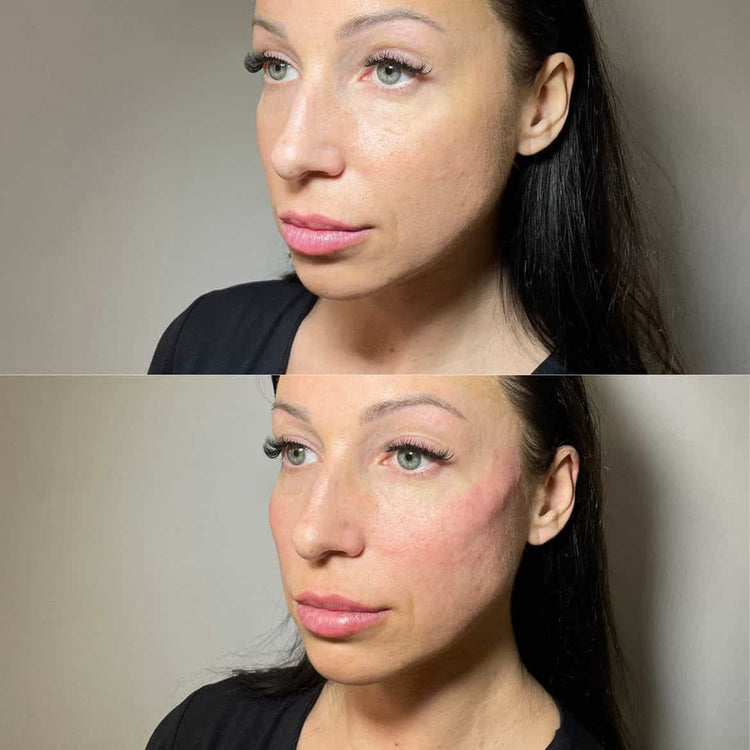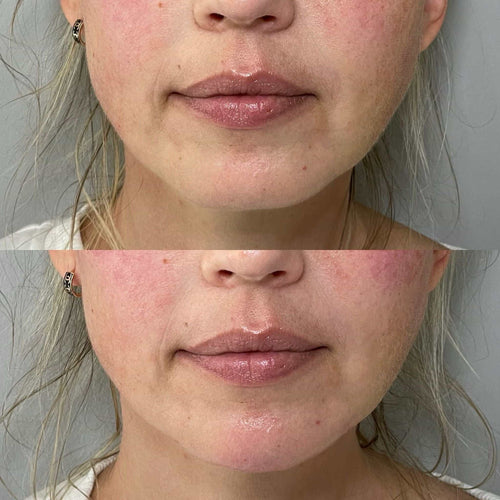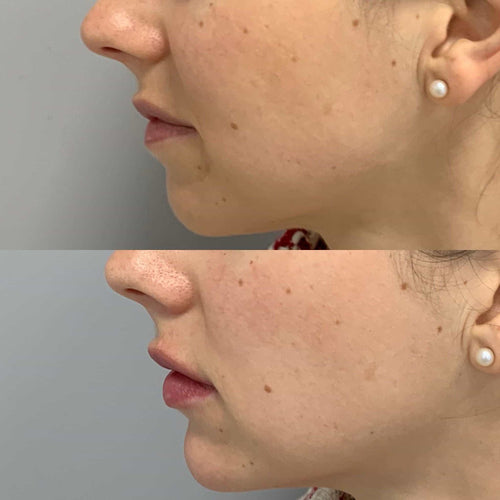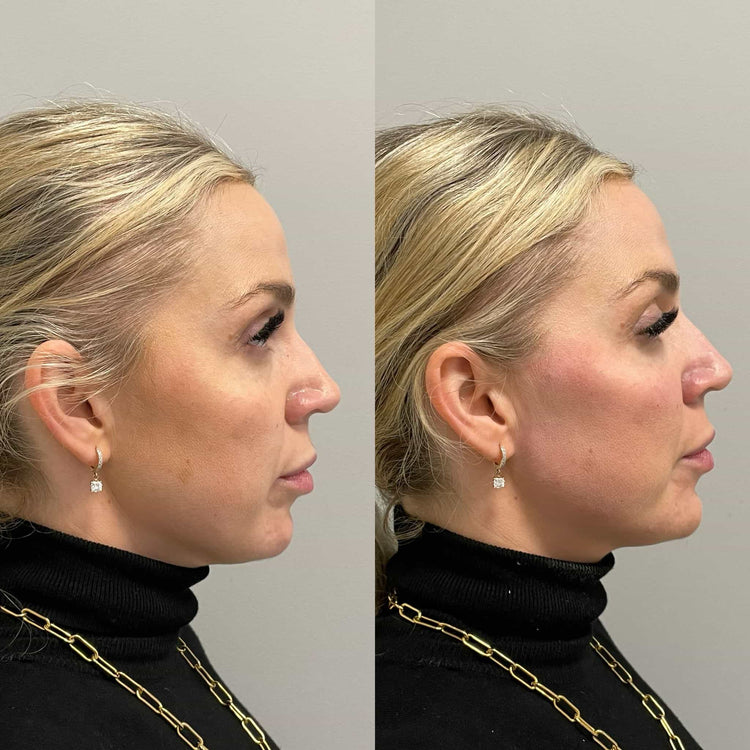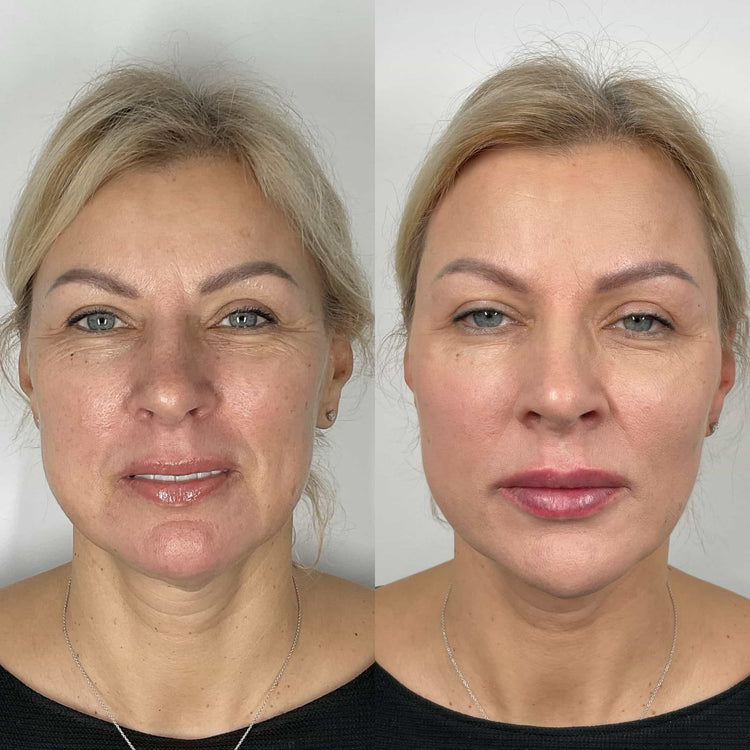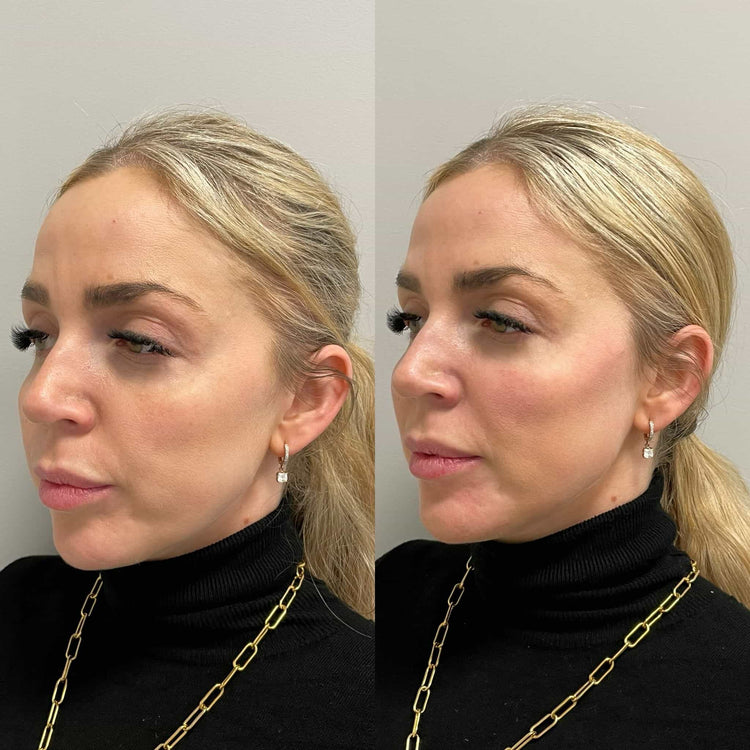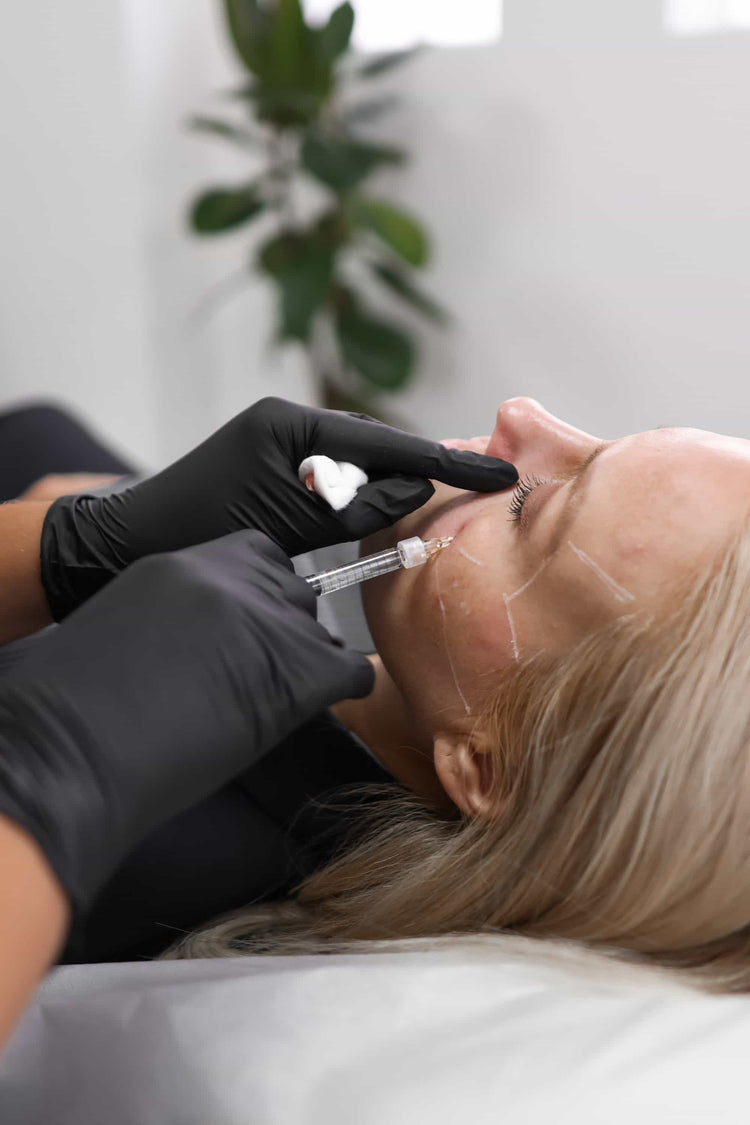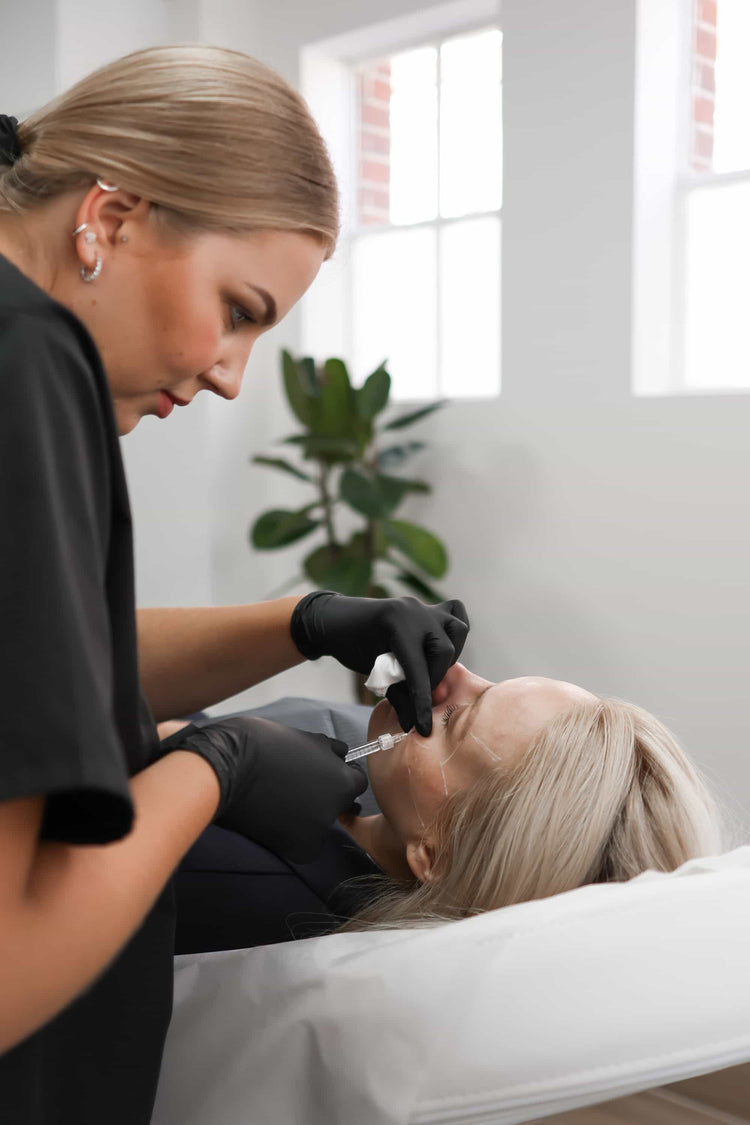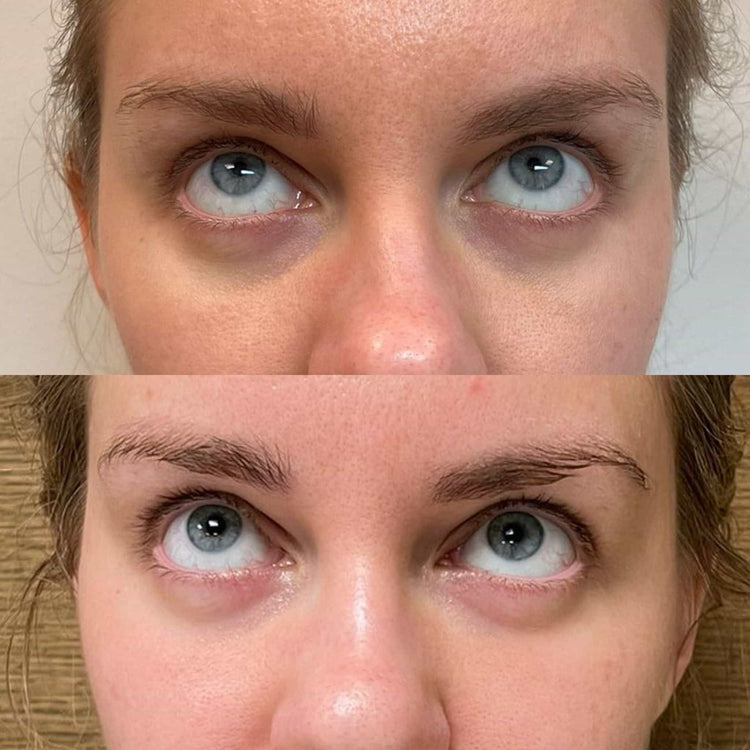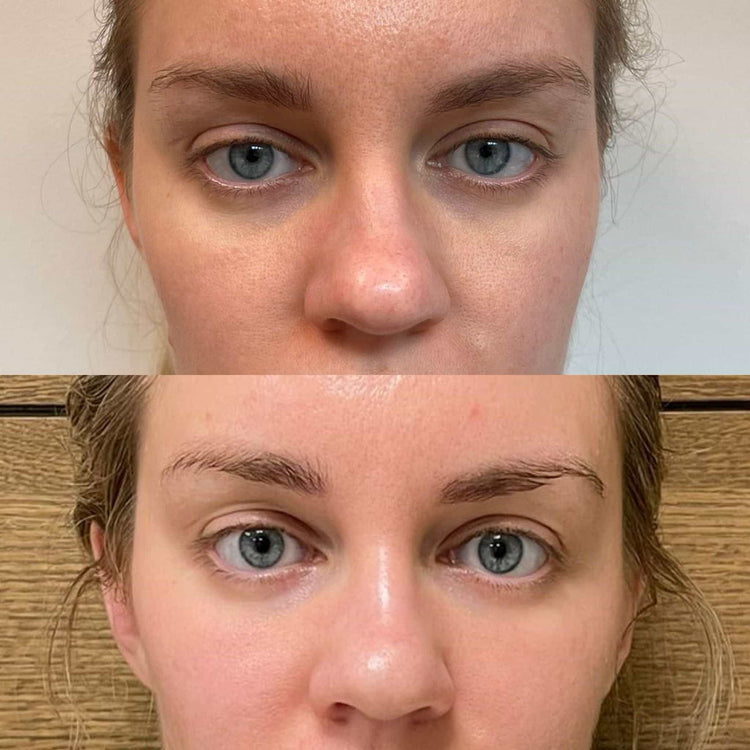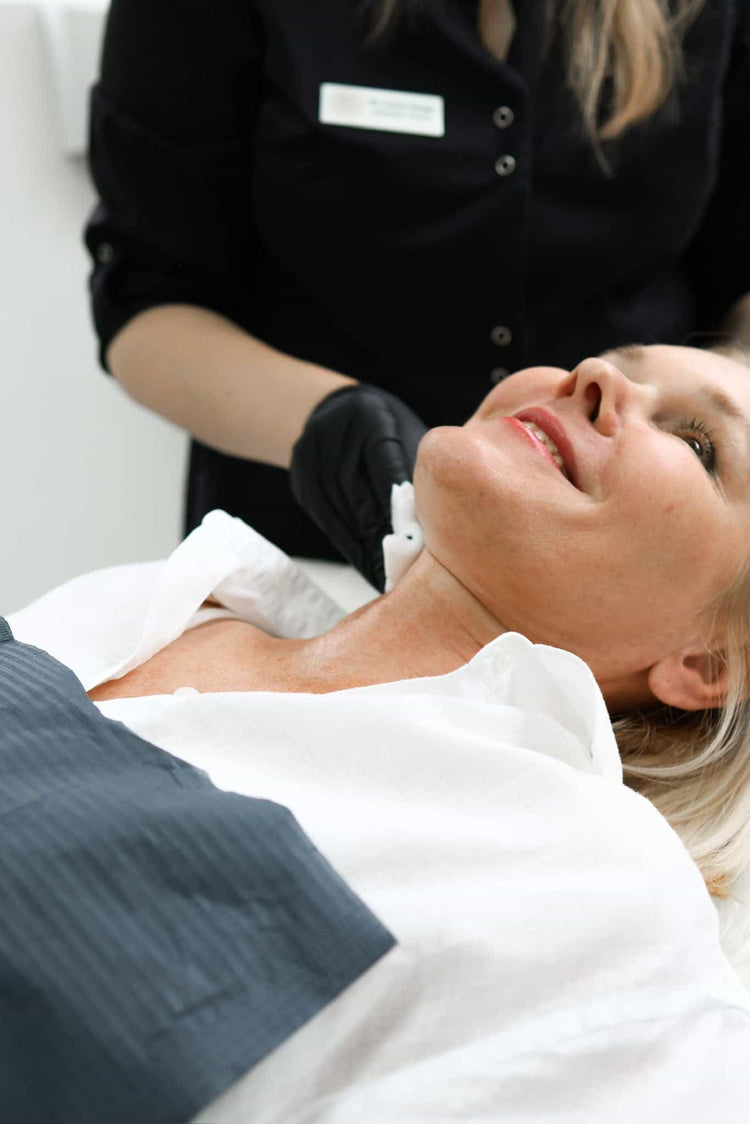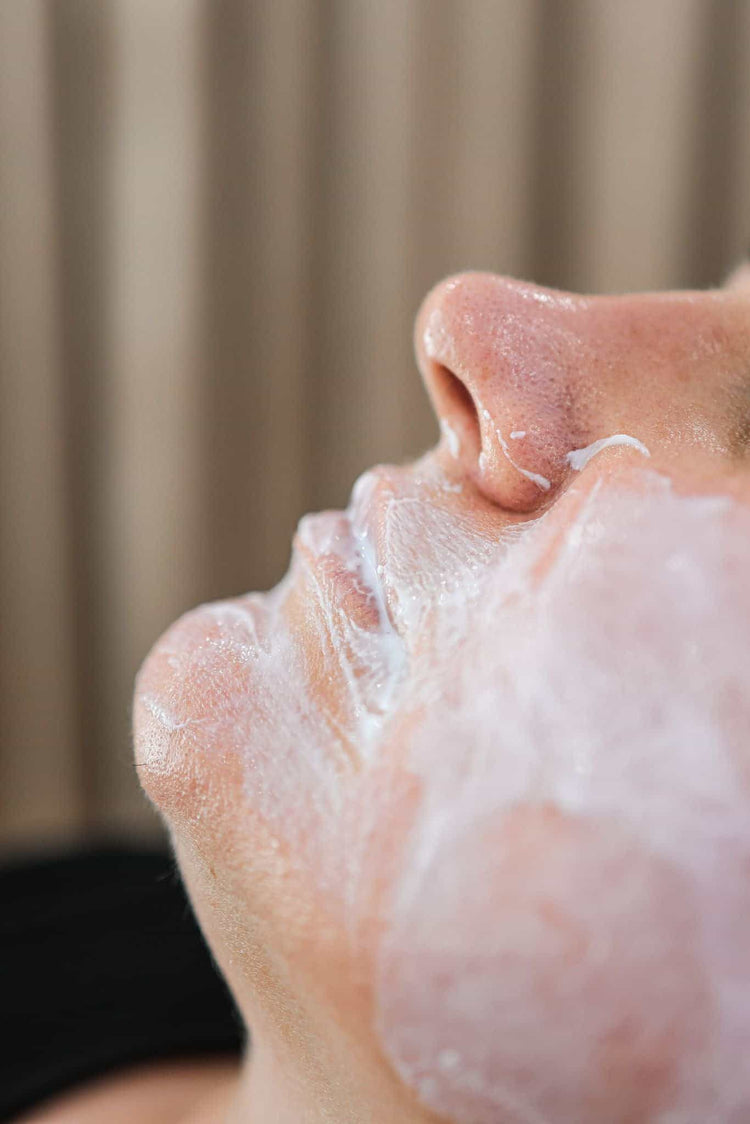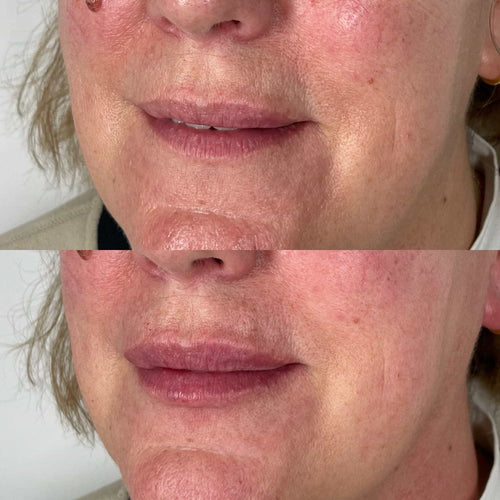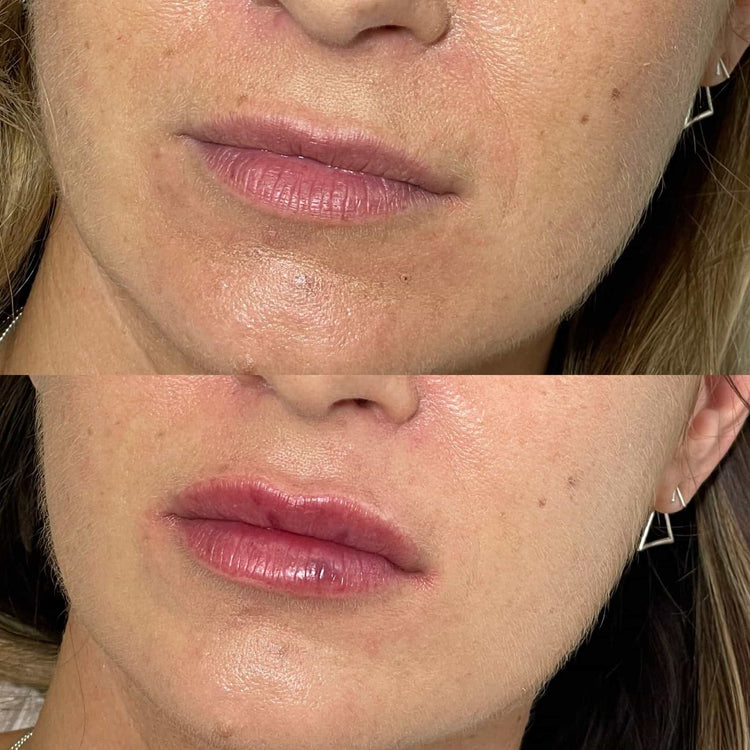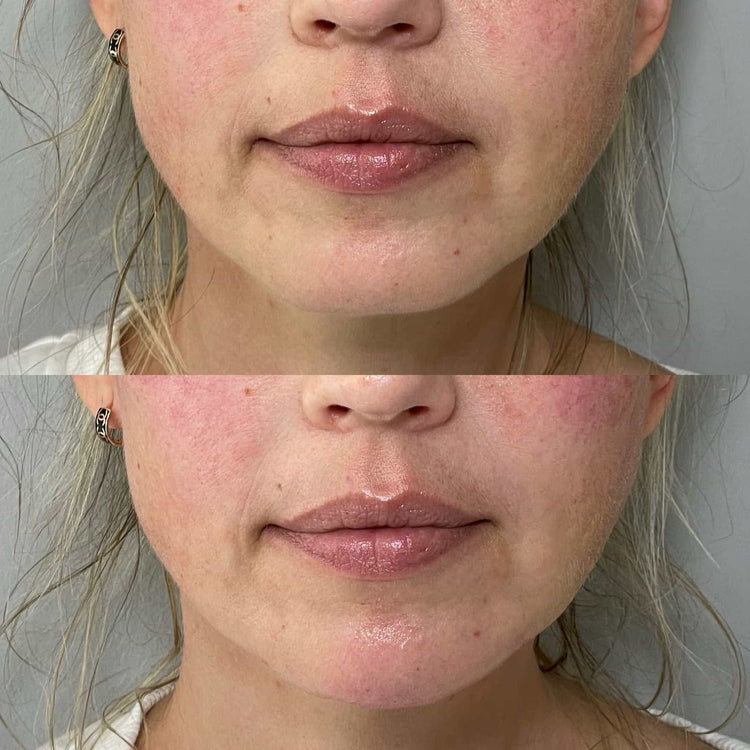How Long Does The Liquid Face Lift Last?
Book a Dermal Filler Consultation at It’s Me and You Clinic with Dr. Laura Geige
Factors Influencing Longevity
Injection Type
Longevity of a “liquid facelift,” which typically involves dermal fillers and Botox injections, varies considerably depending on several factors.
One primary factor is the type of filler used. Hyaluronic acid fillers, such as Juvederm or Restylane, tend to last six months to a year. Poly-L-lactic acid (PLLA) fillers, like Sculptra, stimulate collagen production and can offer results lasting up to two years.
Injection technique plays a significant role in longevity. Skilled injectors who place filler strategically and precisely can achieve longer-lasting results.
Individual factors like skin type, metabolism, sun exposure, and lifestyle also influence how long the effects last. Smokers, for example, tend to metabolize fillers faster, shortening their duration.
Maintaining a healthy lifestyle with regular hydration, sunscreen use, and a balanced diet can help prolong the results of a liquid facelift.
Regular follow-up appointments with a qualified injector are essential to maintain desired results. Top-ups may be required every six months to a year depending on individual needs and filler type.
Facial Anatomy
Longevity of any cosmetic procedure, including a “liquid facelift,” depends on various factors that influence how long it takes for results to fade.
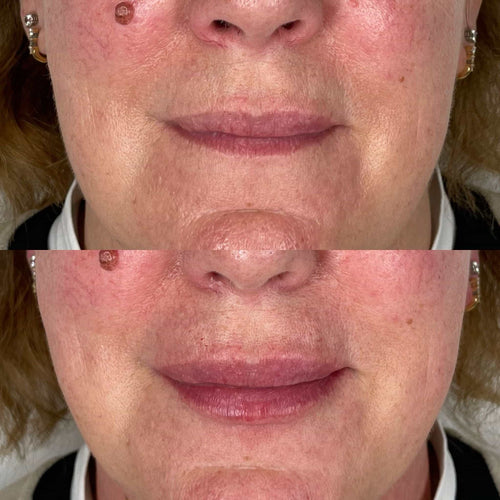
Here are some key factors that affect the longevity of a liquid facelift:
-
Type of Injectables Used:
Different injectables have varying lifespans. For example, hyaluronic acid fillers typically last 6-18 months, while neurotoxins like Botox can last 3-4 months.
-
Dosage and Technique of Injection:
The amount of product used and the placement technique significantly influence longevity. More substantial volumes generally last longer.
-
Individual Metabolism and Skin Thickness:**
Some individuals naturally break down injected substances faster due to their metabolism. Skin thickness also plays a role, as thicker skin tends to hold onto fillers longer.
-
Lifestyle Factors:
Sun exposure, smoking, and dehydration can all accelerate the breakdown of injectables, shortening their lifespan.
-
Facial Anatomy:**
Certain facial areas tend to show results for a shorter duration. For instance, dynamic wrinkles around the eyes and mouth might require more frequent treatments compared to deeper nasolabial folds or jawline definition.
-
Age:**
As we age, our skin naturally loses collagen and elasticity, which can affect how long injectables last.
Understanding these factors is crucial for patients to have realistic expectations about the longevity of their liquid facelift results and discuss appropriate maintenance schedules with their injector.
It’s essential to remember that a “liquid facelift” is not a permanent solution and will require repeat treatments over time to maintain desired outcomes.
Individual Skin Properties
Reserve Your Dermal Filler Consultation with Dr. Laura Geige at It’s Me and You Clinic
Longevity of skin-enhancing treatments like the “liquid facelift,” which typically involves injectables such as hyaluronic acid fillers and botulinum toxin (Botox), varies greatly depending on several factors.
One major factor is the individual’s skin properties. Skin thickness, elasticity, and collagen production all play a role in how long results last. Individuals with thicker, more elastic skin may see results from injectables last longer compared to those with thinner or less elastic skin.
Collagen is a protein that provides structural support to the skin. As we age, collagen production naturally declines, leading to wrinkles and sagging. Individuals with higher levels of collagen in their skin tend to experience longer-lasting results from injectables as the fillers are better supported and integrated.
Lifestyle factors also contribute to longevity. Sun exposure is a primary culprit in skin aging. UV radiation breaks down collagen and elastin, accelerating wrinkles and sagging. Individuals who diligently protect their skin with sunscreen, wear protective clothing, and avoid excessive sun exposure will likely see longer-lasting results from their “liquid facelift.”
Smoking also negatively impacts skin health by reducing blood flow to the skin and hindering collagen production, leading to premature aging. Quitting smoking can improve skin health and potentially prolong the effects of injectables.
In addition to individual factors, the type of injectables used and the skill of the practitioner play a crucial role in longevity. Different fillers have varying durations of effect, ranging from several months to over a year.
A skilled injector will assess your individual needs and facial anatomy to choose the most appropriate fillers and techniques for optimal and longer-lasting results.
Lastly, regular maintenance treatments are essential to extend the longevity of a “liquid facelift.” Touch-up appointments with your chosen practitioner can help maintain fullness, reduce wrinkles, and keep your results looking fresh and youthful.
Maintaining Results
Lifestyle Choices
Maintaining the results of a liquid facelift requires a multifaceted approach that goes beyond simply receiving the initial injections.
One crucial element is adopting healthy lifestyle choices. A balanced diet rich in fruits, vegetables, and antioxidants can help protect collagen and elastin fibers from damage, thus preserving the youthful appearance achieved with fillers.
Regular exercise plays a significant role in maintaining facial muscle tone and promoting blood circulation, which delivers nutrients to the skin and aids in collagen production.
Protecting your skin from the sun’s harmful UV rays is paramount. UV exposure accelerates collagen breakdown, leading to wrinkles and sagging. Consistently using broad-spectrum sunscreen with an SPF of 30 or higher, even on cloudy days, is essential for protecting your investment in a liquid facelift.
Additionally, adequate hydration is vital for skin health. Drinking plenty of water helps plump the skin from within, reducing the appearance of fine lines and wrinkles.
Another important factor is avoiding smoking. Smoking significantly damages collagen and elastin fibers, leading to premature aging and undermining the effects of a liquid facelift.
Finally, remember that a liquid facelift, while effective, is not a permanent solution. Top-ups are often required to maintain optimal results. Consulting with your dermatologist or plastic surgeon for regular follow-up appointments will help determine the appropriate frequency for touch-up injections based on individual needs and skin rejuvenation goals.
Follow-up Treatments
Maintaining results after a Liquid Facelift depends on several factors, including individual skin characteristics, lifestyle habits, and the specific products used.
Generally, a Liquid Facelift can provide noticeable results for 6-18 months. To prolong the effects and maintain optimal outcomes, follow-up treatments are recommended.
Here’s what you can expect regarding follow-up treatments:
- Initial Follow-Up: A follow-up appointment is typically scheduled 2-4 weeks after the initial treatment. This allows the practitioner to assess the results, address any concerns, and make adjustments if necessary.
- Top-Up Treatments: Depending on individual needs and desired results, top-up treatments may be recommended every 6-12 months. These treatments involve a smaller volume of injectables to maintain facial volume and smoothness.
- Maintenance Schedule:** A personalized maintenance schedule will be established with your practitioner based on your skin’s response and desired outcomes. This may involve annual or semi-annual top-up treatments to preserve the results.
Book a Dermal Filler Appointment with Dr. Laura Geige at It’s Me and You Clinic
In addition to follow-up treatments, adopting a healthy lifestyle can contribute to maintaining the longevity of your Liquid Facelift results:
- Protect Your Skin from Sun Damage: Wear sunscreen daily with an SPF of 30 or higher, even on cloudy days.
- Hydrate Inside and Out: Drink plenty of water to keep your skin hydrated from within. Also, use a moisturizer suitable for your skin type.
- Eat a Balanced Diet:** Consume a nutritious diet rich in fruits, vegetables, and antioxidants. This helps support collagen production and overall skin health.
- Avoid Smoking and Excessive Alcohol: These habits can accelerate aging and diminish the effects of your Liquid Facelift.
Realistic Expectations
Individual Variation
Understanding realistic expectations regarding any cosmetic procedure, including a liquid facelift, requires acknowledging individual variation in skin characteristics, aging processes, and lifestyle factors.
While marketing materials may tout impressive before-and-after photos showcasing dramatic results, it’s crucial to remember that these often represent the best possible outcomes achieved with specific patients who may have also undergone other procedures or experienced unique responses to treatment.
Skin elasticity and thickness vary greatly from person to person. Some individuals naturally possess more resilient skin that retains its youthful plumpness longer, while others may experience more pronounced signs of aging due to genetics, sun exposure, or environmental factors.
Similarly, the rate at which collagen and elastin breakdown differs. Age is a significant factor, as collagen production naturally declines over time, leading to sagging and wrinkles. Other elements like smoking, poor diet, and lack of sleep can accelerate this process.
Therefore, it’s unrealistic to expect the same longevity or extent of results from a liquid facelift for every individual. The treatment’s effects typically last for several months, with some people experiencing results that persist longer than others.
It’s essential to have a candid conversation with a qualified dermatologist or plastic surgeon experienced in facial rejuvenation techniques. They can assess your unique skin type, aging patterns, and desired outcomes to provide personalized expectations and treatment recommendations.
Long-Term Effects
Realistic expectations are crucial when considering any cosmetic procedure, especially one like a Liquid Facelift.
While it offers noticeable improvements, understanding its **long-term effects** and limitations is essential.
A Liquid Facelift, utilizing injectables like hyaluronic acid fillers and Botox, delivers temporary results. The duration varies depending on factors such as the product used, individual metabolism, lifestyle, and sun exposure.
Hyaluronic acid fillers typically last **6 to 18 months**, while Botox effects usually fade within **3 to 4 months**.
To maintain the youthful appearance achieved with a Liquid Facelift, repeated treatments are necessary. This is a vital aspect of managing expectations.
It’s important to remember that a Liquid Facelift does not halt or reverse the natural aging process. Over time, gravity, collagen loss, and other factors continue to influence facial structure. Regular touch-up appointments will be needed to prolong the results.
While a Liquid Facelift can provide a significant rejuvenating effect, it’s not a permanent solution.
Embracing realistic expectations and understanding the need for ongoing maintenance is key to achieving satisfying, long-term outcomes.
Fringe Beverly Hills Your Relationship Edge Electric Youth Magazine Gifted Brits


